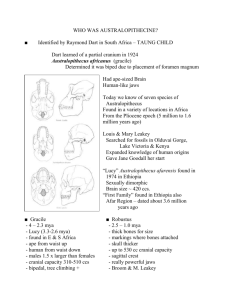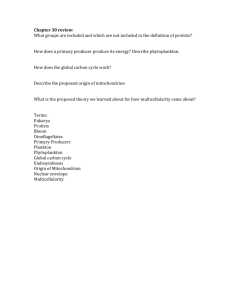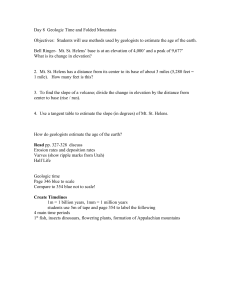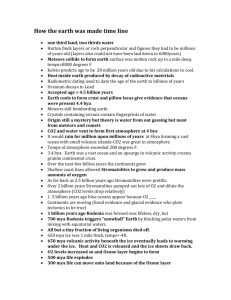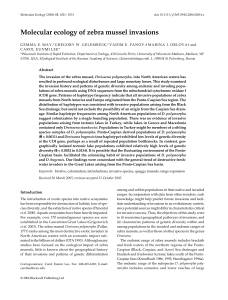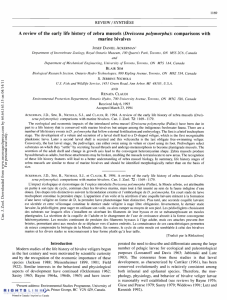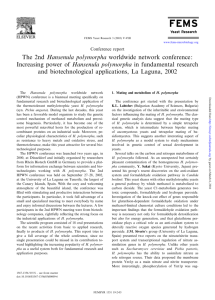MEC_2816_suppmatdoc
advertisement
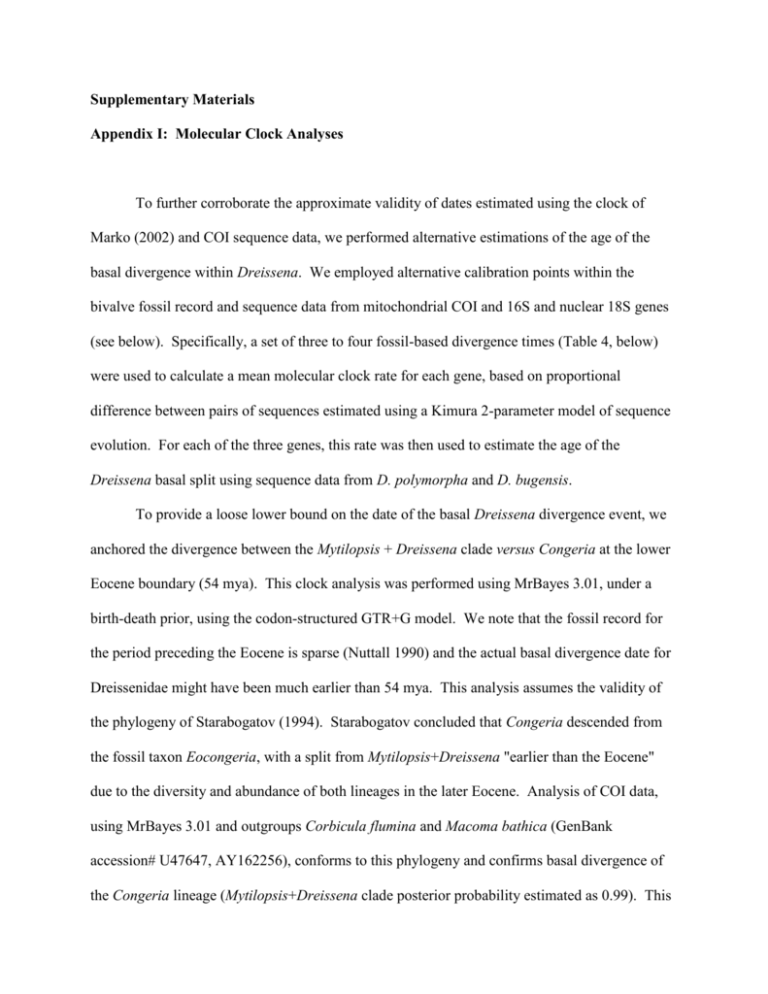
Supplementary Materials Appendix I: Molecular Clock Analyses To further corroborate the approximate validity of dates estimated using the clock of Marko (2002) and COI sequence data, we performed alternative estimations of the age of the basal divergence within Dreissena. We employed alternative calibration points within the bivalve fossil record and sequence data from mitochondrial COI and 16S and nuclear 18S genes (see below). Specifically, a set of three to four fossil-based divergence times (Table 4, below) were used to calculate a mean molecular clock rate for each gene, based on proportional difference between pairs of sequences estimated using a Kimura 2-parameter model of sequence evolution. For each of the three genes, this rate was then used to estimate the age of the Dreissena basal split using sequence data from D. polymorpha and D. bugensis. To provide a loose lower bound on the date of the basal Dreissena divergence event, we anchored the divergence between the Mytilopsis + Dreissena clade versus Congeria at the lower Eocene boundary (54 mya). This clock analysis was performed using MrBayes 3.01, under a birth-death prior, using the codon-structured GTR+G model. We note that the fossil record for the period preceding the Eocene is sparse (Nuttall 1990) and the actual basal divergence date for Dreissenidae might have been much earlier than 54 mya. This analysis assumes the validity of the phylogeny of Starabogatov (1994). Starabogatov concluded that Congeria descended from the fossil taxon Eocongeria, with a split from Mytilopsis+Dreissena "earlier than the Eocene" due to the diversity and abundance of both lineages in the later Eocene. Analysis of COI data, using MrBayes 3.01 and outgroups Corbicula flumina and Macoma bathica (GenBank accession# U47647, AY162256), conforms to this phylogeny and confirms basal divergence of the Congeria lineage (Mytilopsis+Dreissena clade posterior probability estimated as 0.99). This analysis resulted in an estimate of 26 mya (95%CI 14-42) for the minimum age of the basal divergence event within Dreissena. Table 4. Alternative calibrations and inferred divergence time between D. polymorpha and D. bugensis. Estimates of proportional difference based on Kimura 2-parameter model (K2P) are presented for the specified contrasts and genes. The mean rate for each gene is used to estimate an age for the D. polymorpha/D. bugensis split. The set of species chosen for analysis of COI is largely identical to that used by Luttikhuizen et al. (2003). Contrast Divergence Time (Reference) Gene Macoma vs. Donax 90-140 mya (Pohlo 1982) COI 18S Sinonovacula constricta vs. Donax/Macoma 206-251 mya (Pohlo 1982) COI Mytilus edulis vs. Mytilus californianus 30 mya (Coan et al. 2000) COI 16S 18S Mytilus vs. Adamussium/Pecten 400-480 mya (Moore 1969) 16S Barbatia lima vs. Arca ventricosa 144-206 mya (Cox et al. 1969) COI 18S Chamelea gallina vs. Venus verrucosa 25-40 mya (Cox et al. 1969) 16S Inferred Divergence Time D. polymorpha vs. D. bugensis 89 mya estimate COI 41 mya estimate 16S 92 mya estimate 18S GenBank Sequences used in Molecular Clock Calibration Analyses 16S rRNA: AJ243882 (Adamussium colbecki), AJ548762 (Chamelea gallina), AJ548763 (Venus verrucosa), AY650084 (Pecten maximus), AF023600 (Mytilus californianus), U68770 (Mytilus californianus), AY350784 (Mytilus edulis), U22885 (Mytilus galloprovincialis), AF507049 (Dreissena polymorpha), AF507047 (Dreissena bugensis) COI: AB076935 (Arca ventricosa), AB076931 (Barbatia lima), AB040842 (Donax cuneatus), AB076949 (Sinonovacula constricta), AF443221 (Macoma balthica), AB040844 (Donax faba), U68776 (Mytilus californianus), AF241963 (Mytilus edulis) 18S rRNA: AY570554 (Macoma balthica), AJ309018 (Donax trunculus), X90960 (Arca noae), AF207646 (Barbatia barbata), X91974 (Barbatia virescens), L33448 (Mytilus edulis), L33449 (Mytilus californianus), AF305702 (Dreissena polymorpha), AF305703 (Dreissena bugensis). Appendix II: Physical Descriptions of Newly Collected Samples of Dreissena Dreissena polymorpha anatolica (Fig. 4B; sites 23-27) Shells were relatively small, rather elongated, and almost rectangular, with equally-sized valves that were moderately inflated. The umbo bent slightly, but often acutely (in a beaked fashion), and was close to the ventral field. The byssal hole is closer in proximity to the posterior than to the anterior. The central portion of the dorsal rim was often relatively straight and parallel to the ventral rim. A wing-like ridge near the ventral field on the valves extended from the umbo and tapered off near to the anterior of the ventral field. The shells were greyish/cream in color and often had a faint dark striped pattern similar to that of D. p. polymorpha. Dreissena polymorpha gallandi (Fig. 4C; sites 22, 28) Shells were moderately large and relatively elongated, with equally-sized valves that were moderately inflated. The umbo bent deeply and was close to the ventral field. The byssal hole was closer in proximity to the posterior than to the anterior. The posterior portion of the shell was slightly bulbous from a side view, with the dorsal rim forming a long sweeping arc. A winglike ridge near the ventral field on the valves extended from the umbo and tapered off to the midpoint of the ventral field. The shells were white, tan, greenish-tan, and light blue with no distinguishable patterns. Dreissena caputlacus (Fig. 4E; site 27) The type specimens occur in lakes near Gölbaşi, Turkey, but have not previously been observed in the Seyhan Dam reservoir near Adana, Turkey (site 27). Shells were moderate/small in size and triangular, with equally-sized valves that were inflated. The byssal hole was very small and narrow and closer in proximity to the posterior than to the anterior. A wing-like ridge near the ventral field on the valves extended from the umbo and tapered off to the midpoint of the ventral field. The dorsal field was very wide; the dorsal edge was characterized by a pointed “wing” that was narrow and nearly flat. From a ventral view, the ventral shell margin was slightly sinusoidal. The exterior of the shell was very dark brown, nearly black in color. The interior of the shell was blue and black.

